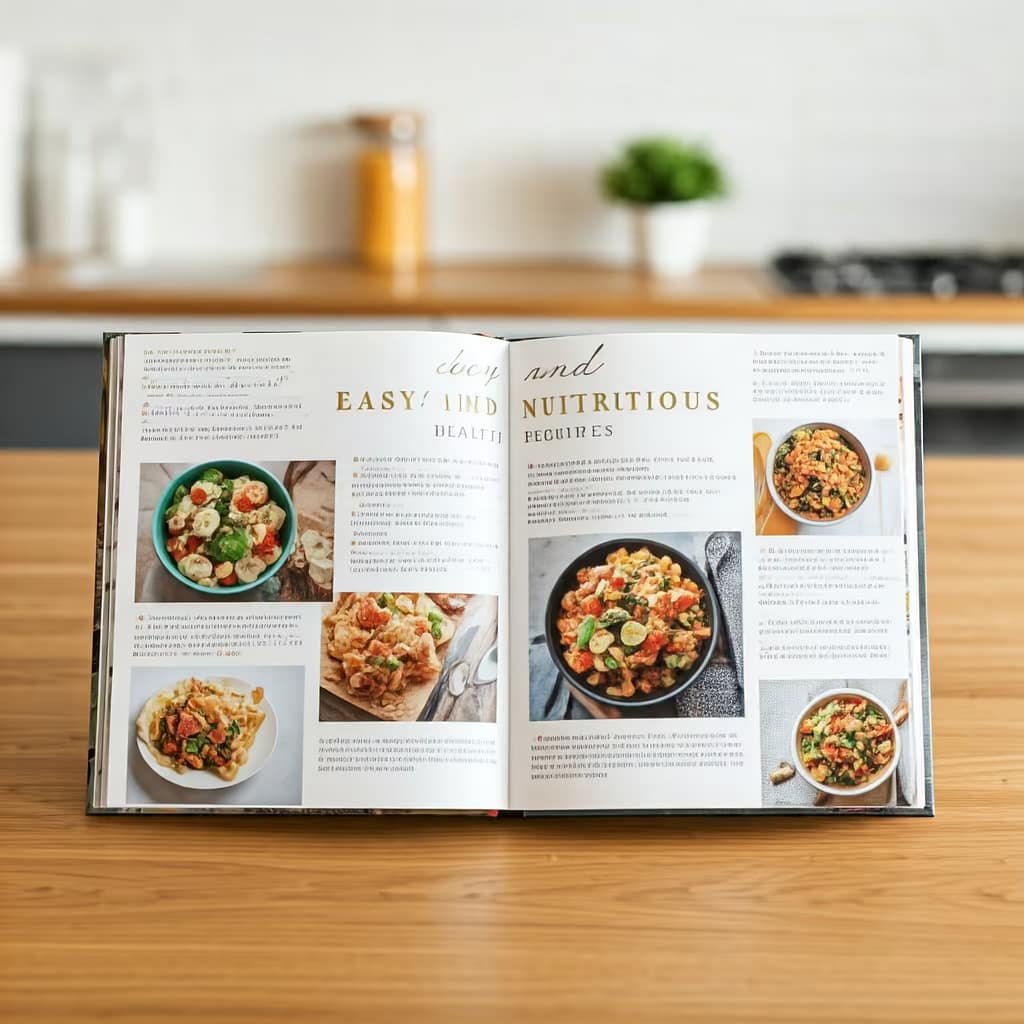Nothing is better than a world increasingly attuned to the importance of Healthy and wellness. The significance of a balanced diet has emerged in our daily lives as a priority. Home cooking not only extends an appreciation for the ingredients consumed but also serves as a way of building your meals with nutritional quality at the forefront. This blog post will enlighten us to healthy recipes and serve a compilation of dishes that beget the principles of nutritious eating without comprising flavor or satisfaction.
Why Healthy Eating Matters
Healthy eating intrinsically links into our quality of life. It is one reason that would affect our physical well-being and impact our mental health, playing a vital role in the prevention of chronic diseases. In such a way, according to many nutritional guidelines, a balanced diet must consist of a number of fruits, vegetables, whole grains, lean proteins, and healthy fats. These components would not only give a person the indispensable nutrients needed but also provide one with a feeling of fullness and energy needed in accomplishing an active lifestyle.
In addition to that, healthy recipes empower an individual with the option of food items. The dietary habit gets further strengthened with healthy recipes, one of them providing an experience of empowerment while cooking such meals.
Kitchen Self-Reliance
Cooking at home holds various benefits, for example, it includes selecting quality ingredients, avoiding unhealthy sugars and fats, and the liberty of personalizing according to one’s preference and health target.
Main Elements of Healthy Recipes
There are quite a few guiding principles when composing a healthy recipe. Among the most critical are as follows:
1. Whole Ingredients : Utilize whole foods that are only mildly processed. Fresh fruits and vegetables, whole grains, and good-quality proteins are better than refined alternatives.
2. Balanced Nutrients : Keep your dishes balanced over macronutrients combined with micronutrients like vitamins and minerals. This should theoretically support proper body function and enhance general health.
3. Flavour not Fattening : Practice the use of herbs and spices, and natural flavorings to give your dishes flavor, rather than relying on excess sugar or sodium.
4. Portion Control : Pay attention to portions, so you are controlling calories without feeling deprived of the nutrients you need.
5. Seasonal and Local Ingredients : Whenever possible, use seasonal and locally sourced ingredients, as these are not only more likely to taste better but are often more nutritious and sustainably produced.
Healthy Recipe Collation
Ingredients
1 cup quinoa, rinsed
2 cups low-sodium vegetable broth or water
– 1 can (15 oz) black beans, drained and rinsed
– 1 cup cherry tomatoes, halved
– 1 avocado, diced
– ½ cup red onion, finely chopped
– 1 cup corn (fresh, frozen, or canned)
– ¼ cup cilantro, chopped
– Juice of 2 limes
– Salt and pepper to taste
Steps:
1. Mix quinoa with vegetable broth (or water). Place a pot on a heat source and bring it to a boil, then reduce the temperature, cover, and let simmer for about 15 minutes or until quinoa is fluffy and the liquid is absorbed. Take off heat and cool.
2. Combine cooled quinoa, black beans, cherry tomatoes, avocado, red onion, corn, and cilantro in a large bowl.
3. Drizzle with lime juice, and season with salt and pepper to taste. Toss gently to combine and serve chilled or at room temperature.
Baked Salmon with Asparagus

Ingredients:
– 4 salmon fillets
– 1 bunch asparagus, trimmed
– 2 tablespoons olive oil
– 2 cloves garlic, minced
– Juice of 1 lemon
– ½ teaspoon paprika
– Salt and pepper to taste
– Lemon wedges for serving
Instructions:
1. Preheat the oven to 400°F (200°C).
2. Put the salmon fillets and asparagus on a baking sheet. Drizzle with olive oil and sprinkle the garlic, lemon juice, paprika, salt, and pepper over them, then toss the asparagus to evenly coat.
Bake for 15-20 minutes or until the salmon is cooked through and breaks down with a fork. Serve with lemon wedges.
Ingredients
1 can (15 oz) chickpeas, drained and rinsed
1 cup cooked brown rice or quinoa
– 1 cup diced cucumber
– 1 cup cherry tomatoes, halved
– ½ cup red onion, finely chopped
– ½ cup feta cheese, crumbled (optional)
– ¼ cup kalamata olives, pitted and sliced
– 2 tablespoons olive oil
– 2 tablespoons red wine vinegar
– 1 teaspoon dried oregano
– Salt and pepper to taste
How to prepare:
In a large bowl, combine chickpeas, cooked rice or quinoa, cucumber, cherry tomatoes, red onion, feta cheese, and olives.
2. In a small bowl, combine olive oil, red wine vinegar, oregano, salt, and pepper. Pour over the salad and gently toss. Serve cool or at room temperature.
4. Spinach and Mushroom Omelette

Ingredients
2 eggs
1 cup of fresh chopped spinach
½ cup sliced mushrooms
¼ cup finely chopped onion
1 tablespoon olive oil
Salt and pepper
Feta cheese (optional)
Instructions:
1. Cook chopped onions and mushrooms in a pan over medium heat, until they are soft
2. Add the wilted spinach, salt and pepper, to taste.
3. Beat the eggs in a bowl, then pour them over the vegetable mixture in the pan, let it set fold the omelette, and serve it hot. Adding feta cheese gives it an authentic taste.
Variation and Personalization
The art of cooking is both science and art. Here, the recipes are presented with the intent of a step into adventure. The ideas of personal preference or diet may be substituted, meaning to retain nutrition as well as palatability of the meal. For instance, quinoa may replace brown rice, or one can add more vegetables that happen to be in season. Of course, building a repertoire of healthy recipes doesn’t have to foreclose indulgence. It is vital to enjoy food and allowing for the occasional treat in the context of health-conscious eating can actually increase overall dietary adherence and pleasure
Conclusion
Healthy recipes are an important foundation upon which to build a nourishing lifestyle. They encapsulate the very essence of mindful eating and provide not only sustenance but also joy. Consciously choosing what we want to prepare opens us up to a lifetime of wellness, health, and more love for the food that sustains us. The way to better health begins in the kitchen, where delightful flavors and healthy ingredients weave a tapestry of wellness. From these good recipes, we feed not only the body but also a more vibrant appreciation for the art of cooking and the joy of sharing food.



